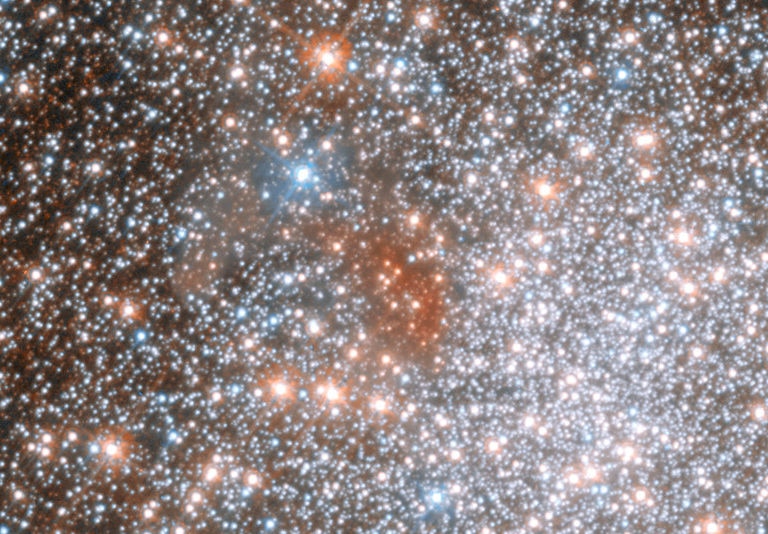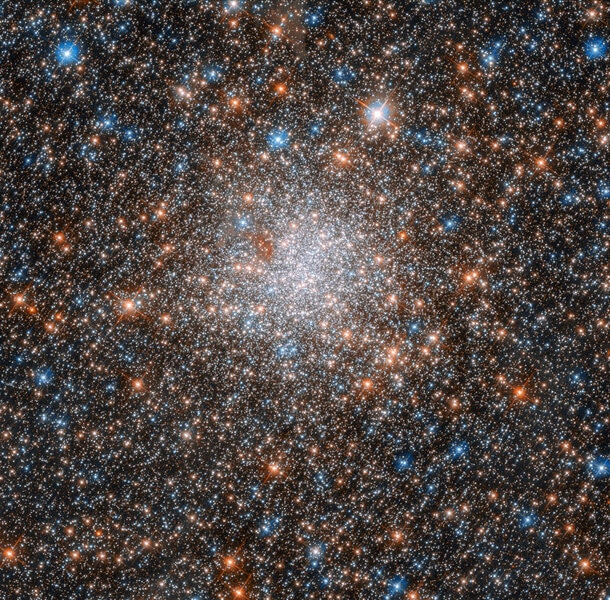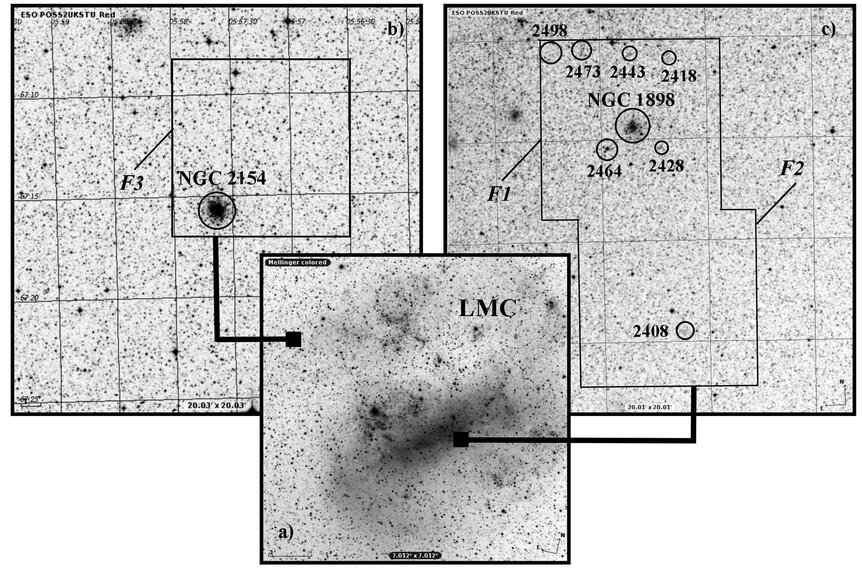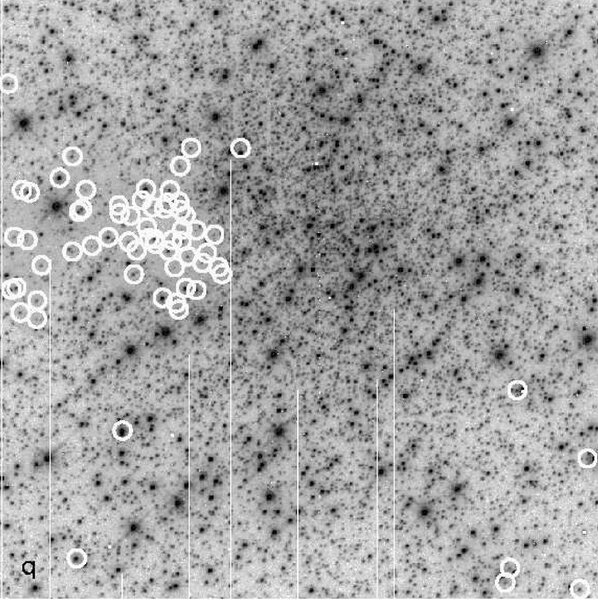Create a free profile to get unlimited access to exclusive videos, sweepstakes, and more!
The imperfect perfection of the star cluster NGC 1898

One of the fun things about being an astronomer is looking at pretty pictures of cosmic objects. A funner thing even than that is seeing something odd, something anomalous, and thinking, "Hmm, I wonder what that is?" Even more funner is then thinking, "I bet it's X. If so, how do I find out? Then digging through some science journals and getting the answer.
The funnest thing of all? Finding out you were right.
First, let's see the pretty picture of the cosmic object. In this case, a spectacular Hubble Space Telescope image of the globular cluster NGC 1898:
Nice, eh? This is a rare case where the colors displayed are close to being "natural," more or less what our eyes see. What you see as blue in the image is a combination of near-ultraviolet (just outside what the eye can detect) and blue, green is actually green, and red is actually infrared just outside what our eyes see. In other words, the star colors you see in the image are pretty much the actual colors of the stars.
Globular clusters are densely packed collections of stars, some of which have hundreds of thousands or even millions of stars in them. They're held together by their mutual gravity, and in general are a few dozen up to a hundred or so light years across. Stars are very close together in a globular; the nearest star to the Sun is more than four light years away, but in that same volume of space in a globular cluster there can be hundreds of stars!
The beauty of NGC 1898 is obvious. But it has a blemish: See that reddish blob to the upper left of center? That caught my eye immediately, and I wondered what it was. My experience as an astronomer told me it was a cloud of dust, a nebula composed of silicates (rocky) grains and long-chain carbon molecules (essentially soot), created in the outer atmospheres of stars as they age and die (they're created in supernova explosions, too). Sometimes dust can be so thick it entirely blocks the light of stars behind it, or at least dims them severely. If it's not quite so thick it tends to absorb or scatter away blue light, letting only red pass through. That blemish in NGC 1898 fits that bill; it looks a bit fuzzy as you'd expect, and the red color is dead giveaway.
But that's weird. Globulars tend not have dust or gas in them; even though they're old that material gets dispersed pretty rapidly due to the stars being huddled so closely together. Seeing a dust cloud in one, especially one that looks so compact, is completely unexpected.
Still, I'd bet it is a dust cloud. How do I find out?
To the scientific journals!
I searched on "NGC 1898" and found some papers. One talked about star formation history, showing how there have been pulses of star birth over time in the cluster. That's interesting, and unusual; most globulars are very old, with stars forming in them in one wave over 10 billion years ago. Some have a second burst of star birth, but it's not common. Why does NGC 1898 have several such episodes?
Ah, it's in the Large Magellanic Cloud! This is a satellite galaxy to our own Milky Way, a dwarf irregular galaxy that is the companion to a second such dwarf called the Small Magellanic Cloud. Both are very roughly 170,000 light years away. The paper authors speculate that interactions between the two galaxies over the eons have caused star formation in the globular over that period. I'd never heard of that, and it's pretty cool.
But that also tells me something else. The LMC is lousy with gas and dust. Maybe that dust cloud in the image is actually in the foreground and belongs to the LMC proper. That's more likely if NGC 1898 is near the center of the LMC as seen from Earth. Happily the paper provides a graphic that shows that the cluster is indeed, in projection, near the LMC center!
Circumstantial evidence, but supportive. Then I found another paper that clinched it. Those researchers were investigating the colors of stars in several different globulars, including NGC 1898. They found something odd: A clutch of red stars all in one spot in the cluster, and weirdly in a region where there weren't very many stars overall.
"AHA!" I thought triumphantly. Success! As I said before dust can block or dim light from stars behind it, and redden light that does get through. That's what these astronomers found! And note how in the Hubble image the stars in the patch look redder, too. Just what I'd expect. Also, they note that the stars in the rest of the cluster don't seem to suffer from this dimming and reddening (what we call extinction), indicating this blotch of dust really is compact and probably isolated.
So this confirms my initial suspicion. That really is a dust cloud, unusual for a globular cluster, but perfectly normal if it happens to be near the LMC, which has these sorts of little blobs to spare. One happens to be along the same line of sight to the cluster, creating that blemish.
I've read about artists who purposefully put an imperfection their work, one small blemish, because it reflects the idea that humans are imperfect. Many claim the imperfection contrasts with the beauty, accentuating it. You appreciate the beauty more when there's something marring it, they say.
It's an interesting idea. Certainly the overwhelming beauty of NGC 1898 is derailed ever so slightly by the dust cloud, but it also sets the cluster apart from others. And to be honest it also makes the cluster more interesting, a mystery to solve and another aspect of it to take into account when studying it.
I guess those artists were right. I appreciate this cluster even more because of that cosmic blemish, a sooty mark on the canvas of this gorgeous object.





























